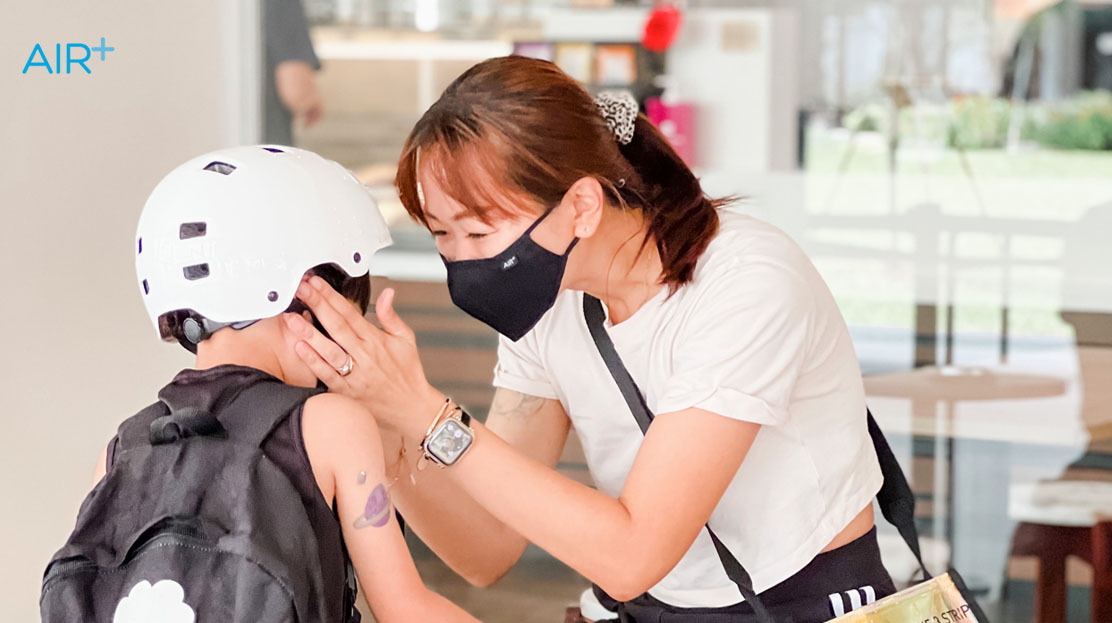Wearing a face mask is one of the most vital and effective ways to slow the spread of transmissible viruses.
AIR⁺ is an award winning supplier of face masks in Singapore, and we’ve put together a guide to help you navigate life with different varieties of masks and their effectiveness at protecting you and your loved ones.
Why are face masks still important?
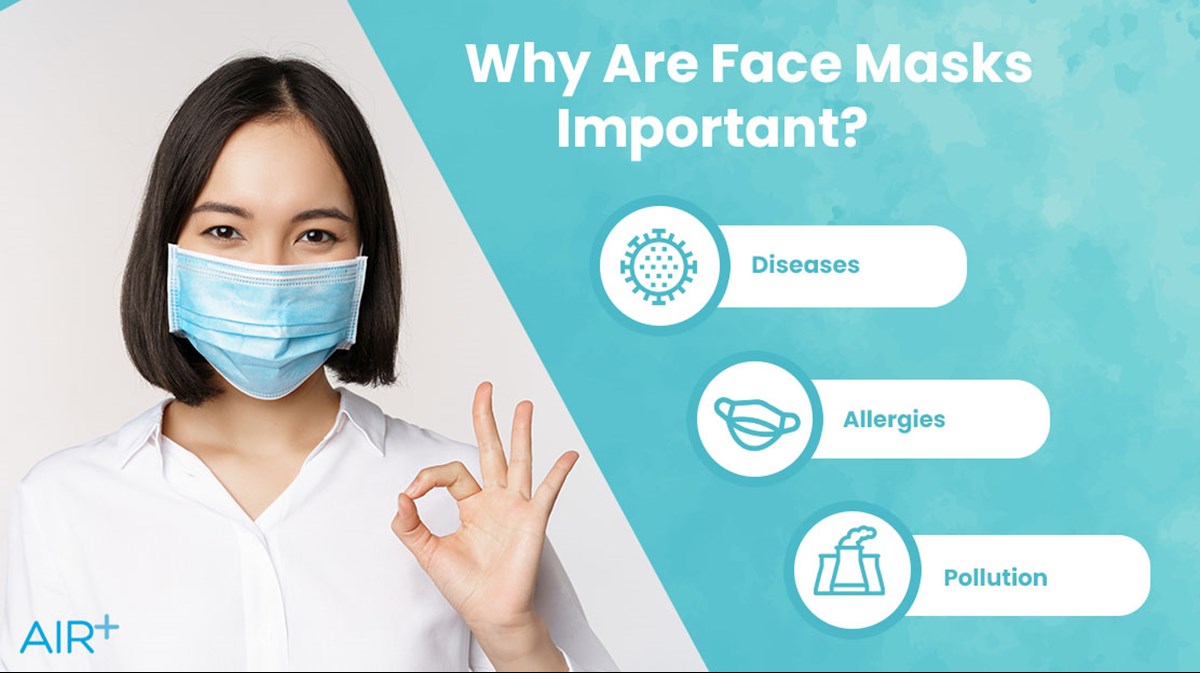
Face masks work by acting as a simple barrier, protecting the wearer from inhaling respiratory droplets released by others and vice versa. In addition to being a barrier, an effective face mask is able to filter particles in the air you inhale.
In many Asian countries, mask wearing has been the norm, even before the pandemic, for protection against airborne viruses and bacteria, hay fever, and harmful pollutants such as PM2.5. Here are some situations where face masks can serve as a preventative measure for general health and wellness in today’s living.
Diseases
Contagious diseases can spread from one person to another in several ways. One way is through direct physical contact, such as touching or kissing an infected person, and through airborne transmission when bacteria and viruses travel through the air when an infected person nearby sneezes or coughs.
Airborne diseases such as Chickenpox, the common cold, and COVID-19 can all be transmitted this way, through exhaled aerosols and particles. Using an effective face mask can help reduce the spread of virus transmission by blocking and filtering infectious particles.
Allergies
If allergens such as pollen, mould, and animal dander triggers allergy and asthma symptoms for you, wearing a face mask can reduce your exposure to these allergens. Some studies have also shown that people experienced fewer allergic rhinitis symptoms during the Covid-19 pandemic by wearing face masks.
Pollution
People experience health effects from being exposed to air pollution. Short-term effects can include illnesses such as bronchitis, and discomfort such as irritation to the nose, throat, eyes, or skin. Prolonged exposure to air pollution can also cause long-term health effects such as heart disease, lung cancer, and respiratory diseases.
An effective face mask can protect you from air pollution by filtering out particulate matter and reduce health risks caused by harmful pollutants, such as PM2.5.
Type of face masks and how to choose the best one for your needs
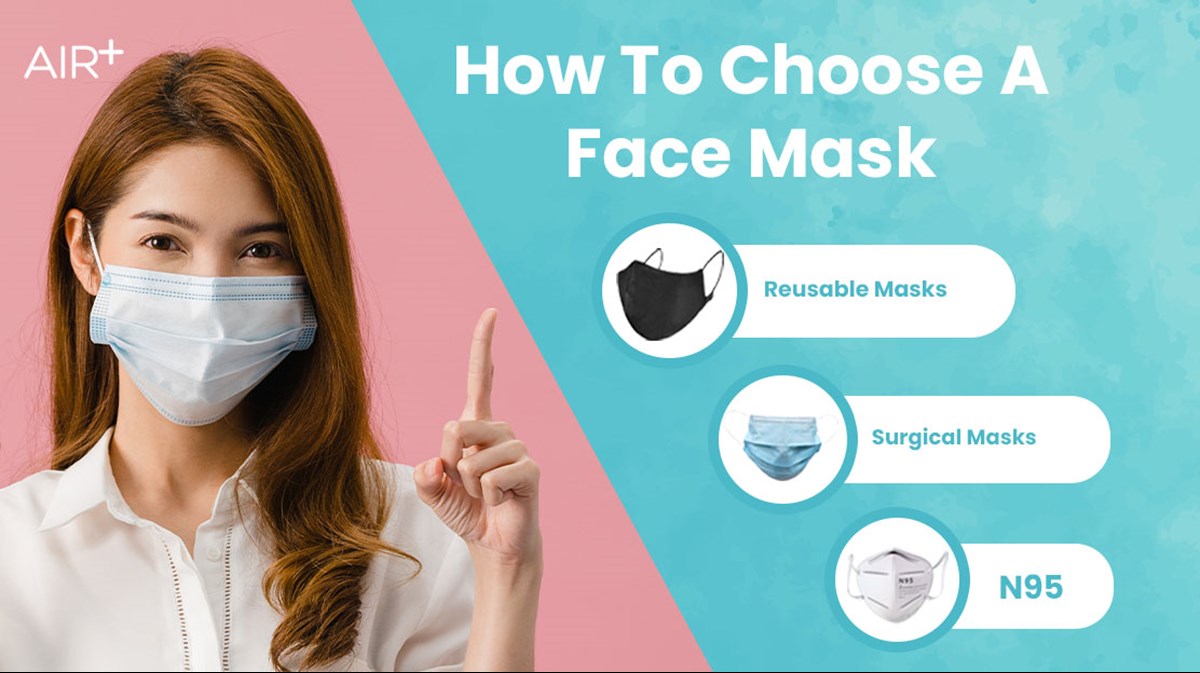
Different types of face masks provide different levels of protection. Depending on the type of mask and how they are used, it is important to find a face mask that best fits you and the purpose of use. Some of the key points to consider are:
- Risk of illness and health complications
- Facial fit of the mask
- Filtration efficiency of the mask
In the next portion of this guide, we dive deeper into some of the face masks available in the market today. Read on to learn more about choosing the best face mask for your protection.
Reusable Masks

Reusable masks are a popular option among many for their cost-effectiveness and sustainability. When choosing a reusable cloth mask, the World Health Organisation recommends that an ideal combination of material for non-medical masks should include three layers as follows:
- an innermost layer of a hydrophilic material such as cotton or cotton blends to absorb moisture as you breathe;
- an outermost layer made of hydrophobic material like polypropylene, polyester, or their blends which may limit external contamination from penetration through to the wearer’s nose and mouth;
- a middle hydrophobic layer of synthetic non-woven material such as polypropylene or a cotton layer to enhance filtration or retain droplets.
With reusable masks, the fit can also vary widely. Regardless of type, masks should fit your face well, minimising any gaps between your face and the edge of the mask, in order to protect you effectively. While nose wires are not required as part of a face mask, they can help to enhance facial fit around the bridge of your nose - an area that is a common source of leaks.
Surgical Masks
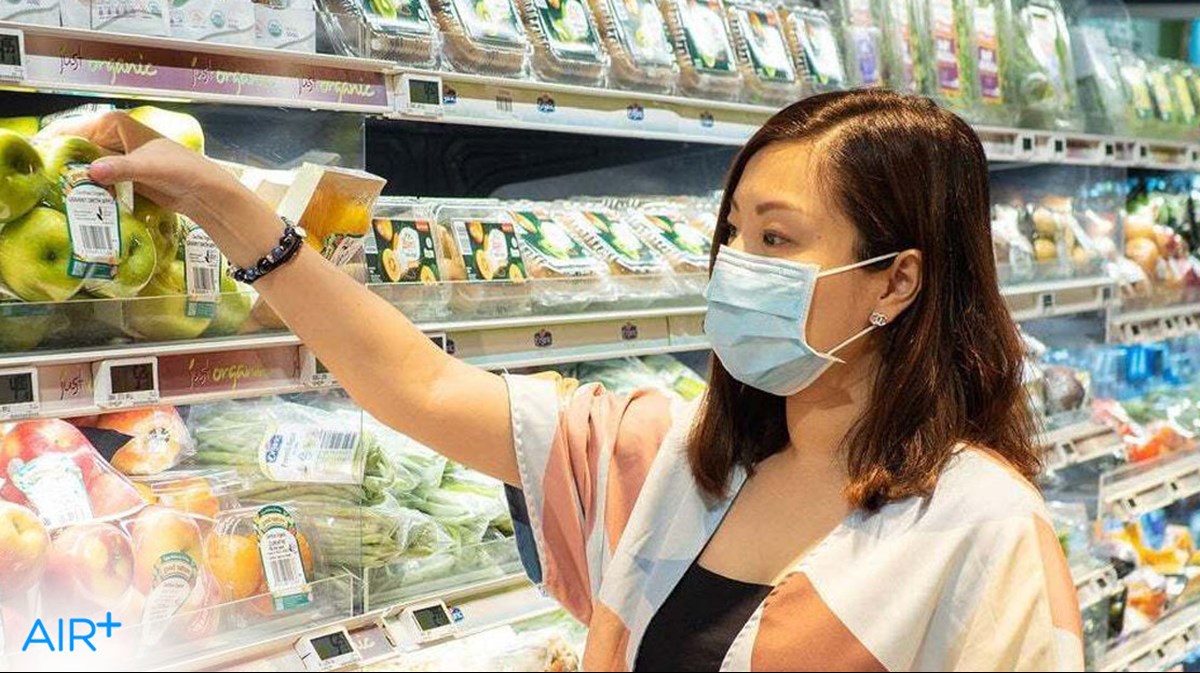
3 ply surgical face masks are medical masks that are fluid resistant, and block large-particle droplets and splatter from the wearer’s mouth and nose, and reduce exposure of the wearer’s saliva and respiratory secretions to others
Surgical masks, which are more often used during medical and surgical procedures in healthcare settings, are regulated as medical devices under the Health Sciences Authority (HSA) in Singapore.
There are standards for the materials of which surgical masks are made from. Their performance characteristics are tested according to international standards such as ASTM F2100, EN 14683, Singapore Standard SS 669 series or equivalent, to verify that prescribed standards for bacterial filtration efficacy, breathability and splash resistance have been met.
N95/KN95 equivalent masks
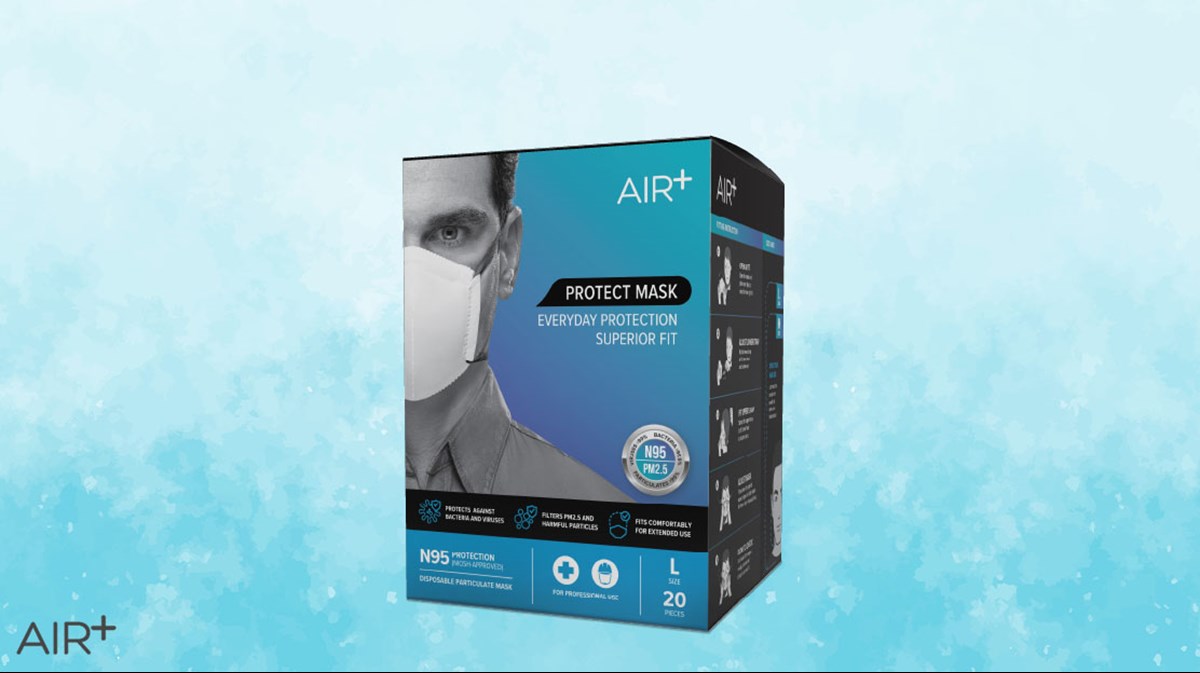
N95 and KN95 masks are similar kinds of respiratory masks that protect both the wearer and people around them by providing higher filtration efficiency for bacteria, viruses and particles.
Some countries have their own certification standard for respirators. While each standard varies a little by country, they are broadly similar. For example, China uses the KN standard (e.g. KN95) and the US uses the N standard (e.g. N95).
The N95 and KN95 standard of respirators are medical grade Personal Protective Equipment (PPE) that can filter out up to 95% of particles, including bacteria, viruses and PM2.5. Due to its effectiveness, N95 respirators are often used in industrial type jobs and healthcare settings to protect the wearer from health risks caused by exposure to these harmful and infectious particles.
People with chronic respiratory, cardiac, or other medical conditions that make breathing difficult should check with their healthcare provider before using an N95 or equivalent mask as its higher filtration efficiency and tight fitting can make it more difficult for the wearer to breathe in. Most importantly, ensure that your N95 or equivalent mask is manufactured or sold by a reputable supplier.
Do’s and don'ts of effective mask usage
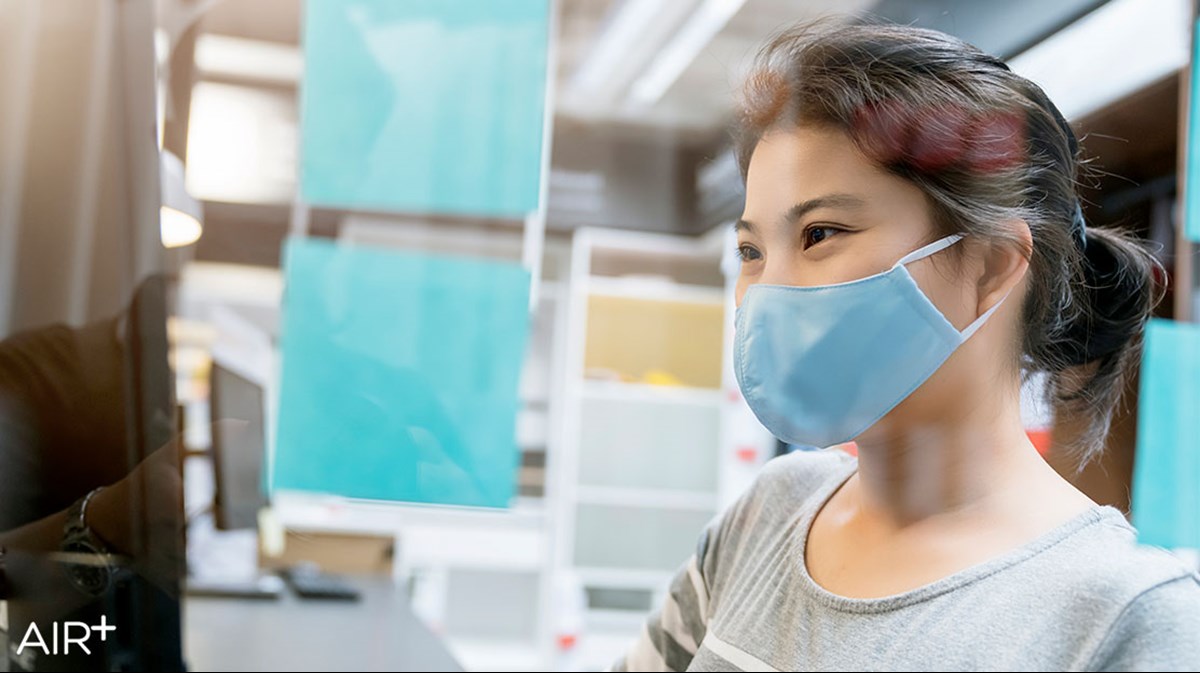
A face mask must be used correctly to ensure its effectiveness. Here are some simple tips and tricks to correct mask usage.
Practise proper removal of your face mask
Disposable face masks should only be used once. You should also remove and replace your masks if they become moist or difficult to breathe in. To remove the mask, lift the loops from your ears and take the mask away from your face while being careful to not touch the surfaces of the mask. Make sure to dispose of the mask in the receptacle. If it is a reusable mask, place it in a dedicated storage such as a sealable bag. Thereafter, wash your hands thoroughly with soap and water, rinse and dry well. Alternatively, you may also choose to use an alcohol-based hand rub.
Avoid touching your mask after it’s on
A good facial fit reduces the need for adjustment later, and prevents risk of transferring virus from your mask to your nose or eyes via your hands. Resist the temptation to touch your face or mask repeatedly, even if your skin feels itchy. Having a small bottle of hand sanitizer with you will be especially helpful, in the event you have to adjust your mask.
Don’t wear your mask on your chin
A mask’s outer surface is covered in bacteria, viruses and dirt from the external environment. Pulling your face mask down to your chin allows the external surface of the mask to come into contact with your face and possibly your lower lip, spreading potential pathogens directly to your mouth and face.
Questions you may have
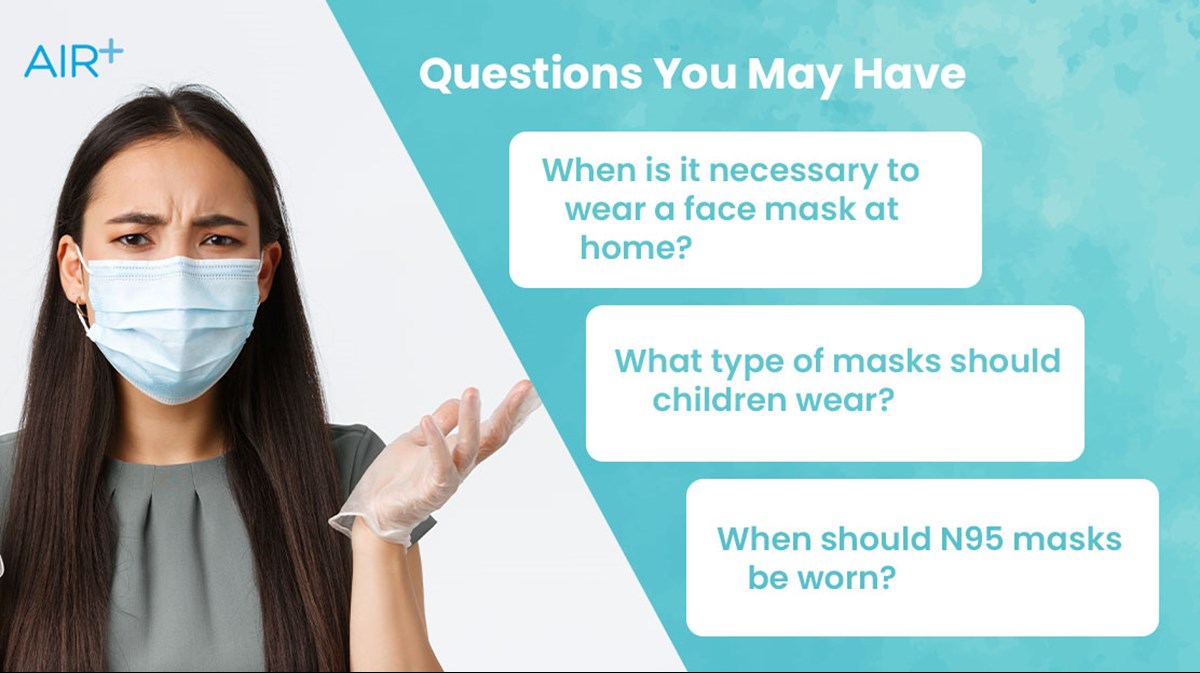
We conclude this guide with some questions you might have with regards to wearing face masks.
When is it necessary to wear a face mask at home?
If a household member either has a confirmed Covid-19 infection or shows symptoms of transmissible viruses, the affected individual should self-isolate as much as possible, using a separate room and bathroom if available. When interacting with other household members, such as through providing care and bringing food, masks should be worn by both the affected and unaffected household members.
What type of masks should children wear?
Face masks and respirators meant for adults are not designed to protect children as their faces may be too small for the masks to fit properly, and hence, may not provide adequate protection. Instead, choose masks that are specifically sized for children if protection is needed.
When should N95 masks be worn?
N95 masks are recommended for individuals in settings where exposure and risk of transmission of infection is higher or, under hazardous air quality conditions, such as dust, small particles, haze, virus outbreaks or volcanic ash.
We hope this article has been useful in providing an introduction to different types of face masks and their key properties. Let us all practise the right safety measures to do our part in keeping the community and our loved ones protected.
AIR⁺ is a leading supplier of premium protective masks including N95 respirators, surgical masks, reusable masks, and more. Reach out to our team today if you’d like to find out more!
Comments are closed.

